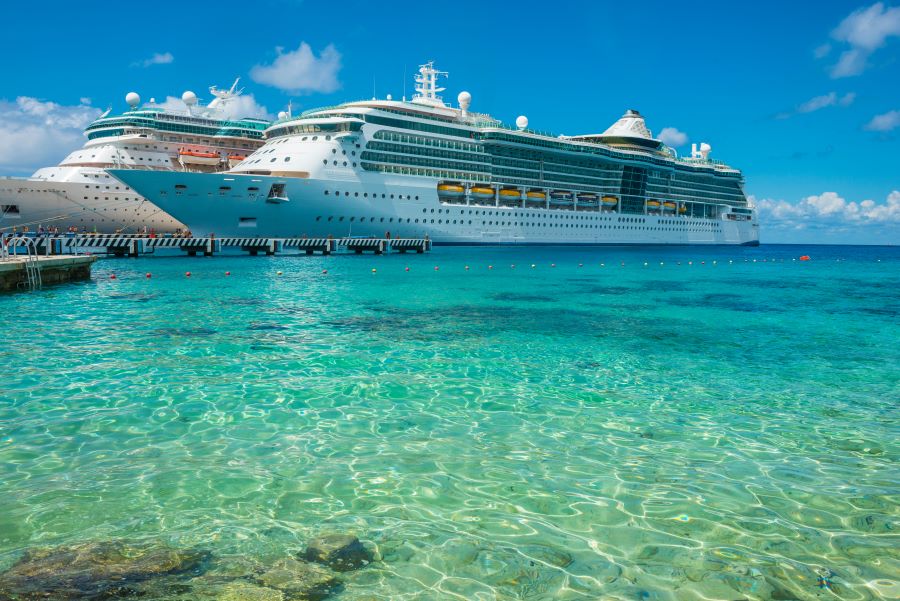Caribbean Cruises And What Makes Them Unique
Caribbean cruises let people visit several islands in one journey while enjoying warm weather and relaxed travel. These trips often include stops at beaches, small towns, and lively ports, giving travelers a look at local culture and food. This article explains the main regions of the Caribbean, the different cruise lengths, and what daily life is like on board. With simple details, it helps readers learn how cruises connect exploration with comfort and why they remain a favorite way to discover this part of the world.

What Distinguishes Caribbean Cruises from Other Destinations
Caribbean cruises stand apart from other cruise destinations due to their unique combination of natural beauty and accessibility. The region features over 700 islands spread across the Greater and Lesser Antilles, offering remarkable diversity within relatively short sailing distances. This proximity allows cruise ships to visit multiple countries in a single week, providing travelers with a sampler of Caribbean cultures without the hassle of multiple flights or hotel changes. The consistently warm climate also makes Caribbean cruises appealing year-round, though peak season typically runs from December through April when northern travelers seek escape from winter weather.
Popular Caribbean Cruise Itineraries and Islands
Caribbean cruise itineraries are typically divided into three main regions: Eastern, Western, and Southern Caribbean. Eastern Caribbean cruises often include stops at ports like San Juan (Puerto Rico), St. Thomas, and St. Maarten, featuring shopping opportunities and beautiful beaches. Western Caribbean itineraries visit destinations such as Jamaica, Grand Cayman, and Mexico’s Yucatan Peninsula, offering archaeological sites and adventure activities. Southern Caribbean cruises reach further into the Lesser Antilles to islands like Barbados, Aruba, and Curaçao, known for their distinctive Dutch influence and pristine beaches. Many Caribbean cruises also include stops at cruise lines’ private islands, which offer exclusive beaches and amenities available only to cruise passengers.
Family-Friendly Features of Caribbean Cruises
Family Caribbean cruises have become increasingly sophisticated in their offerings for multigenerational travel. Major cruise lines operating in the Caribbean have invested heavily in family-friendly amenities including elaborate water parks, character experiences featuring popular entertainment franchises, and age-specific kids’ clubs that provide supervised activities from morning until evening. Family staterooms and suites accommodate larger groups, while flexible dining options cater to younger palates. Caribbean ports offer family-friendly excursions ranging from swimming with dolphins to jungle zip-lining adventures. The all-inclusive nature of cruising also provides predictable vacation budgeting for families, with food, accommodation, and entertainment included in the upfront price.
Luxury Caribbean Cruise Experiences
Luxury Caribbean cruises elevate the standard cruise experience with smaller vessels, personalized service, and exclusive offerings. Premium cruise lines operating in the Caribbean typically sail with passenger counts between 200-900 guests compared to mainstream ships carrying 3,000-5,000 passengers. These intimate ships can access smaller ports unavailable to larger vessels, providing unique itineraries to less-visited destinations like Bequia, Nevis, or Virgin Gorda. Onboard, luxury Caribbean cruises feature spacious suites, gourmet cuisine often created by celebrity chefs, premium beverage packages included in the fare, and higher staff-to-guest ratios ensuring attentive service. Shore excursions on luxury Caribbean cruises typically involve smaller groups and exclusive experiences, from private island tours to bespoke culinary adventures.
Seasonal Considerations and Caribbean Cruise Deals
Caribbean cruise pricing fluctuates significantly throughout the year, creating opportunities for value-conscious travelers. The most affordable Caribbean cruise deals typically appear during hurricane season (June through November), when cruise lines offer substantial discounts to maintain occupancy. January through March represents peak season with premium pricing, while “shoulder seasons” in late April/May and early December offer moderate pricing with pleasant weather conditions. Caribbean cruise deals often include perks beyond discounted fares, such as onboard credit, beverage packages, prepaid gratuities, or included Wi-Fi. Travelers with flexible schedules can benefit from last-minute deals when cruise lines discount remaining inventory, while early bookers may secure the best cabin selection and early bird promotions.
Caribbean Cruise Price Comparisons and Options
Caribbean cruises vary widely in price depending on cruise line, ship age and amenities, itinerary length, cabin type, and sailing season. The following table provides a general overview of current pricing options across different segments of the market:
| Cruise Category | Sample Providers | Price Range (Per Person) | Notable Features |
|---|---|---|---|
| Budget/Mainstream | Carnival, Royal Caribbean, MSC | $299-$799 (3-7 nights) | Larger ships, extensive activities, additional fees for premium dining and beverages |
| Premium | Celebrity, Princess, Holland America | $799-$1,499 (7 nights) | Enhanced dining options, more inclusive packages, more spacious accommodations |
| Luxury | Seabourn, Silversea, Regent | $2,500-$10,000+ (7-10 nights) | All-inclusive pricing, butler service, gourmet dining, smaller ships |
| Expedition/Specialty | Windstar, SeaDream, Ponant | $1,800-$5,000 (7 nights) | Intimate yacht-like vessels, unique destinations, water sports platforms |
Prices, rates, or cost estimates mentioned in this article are based on the latest available information but may change over time. Independent research is advised before making financial decisions.
Caribbean Cruise Environmental and Cultural Considerations
Caribbean cruising continues to evolve in response to environmental and cultural awareness. Cruise lines are increasingly implementing sustainability initiatives including advanced wastewater treatment systems, shore power capabilities to reduce emissions while docked, and elimination of single-use plastics onboard. Culturally conscious shore excursions now often incorporate authentic local experiences that benefit island communities directly. Many cruise lines partner with local organizations for conservation efforts, and some have developed programs where passengers can participate in environmental or community service projects during port calls. These initiatives represent the industry’s response to growing traveler interest in responsible tourism that preserves the very destinations that make Caribbean cruises appealing.
Caribbean cruises maintain their popularity by combining relaxation, adventure, and cultural exploration in a convenient package. Whether travelers seek family fun, romantic luxury, or cultural immersion, the diversity of Caribbean cruise offerings ensures options for nearly every preference and budget, with the common thread of crystal-clear waters and tropical beauty that continues to define the region’s enduring appeal.




